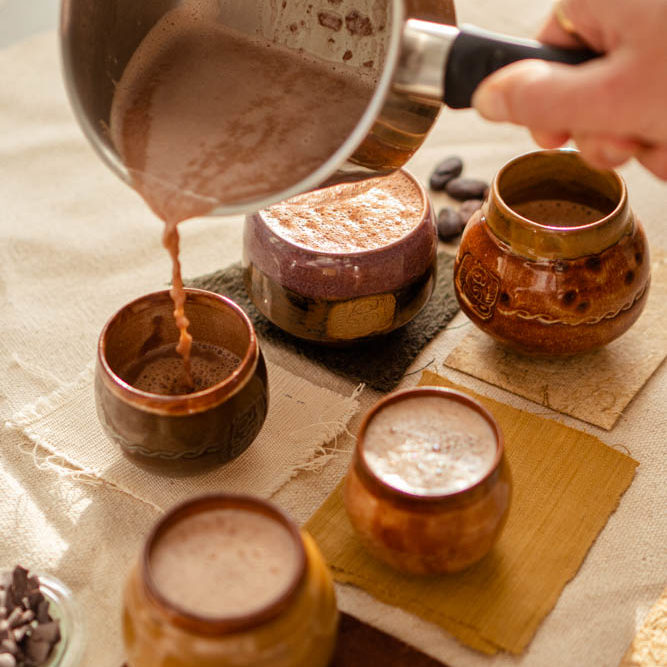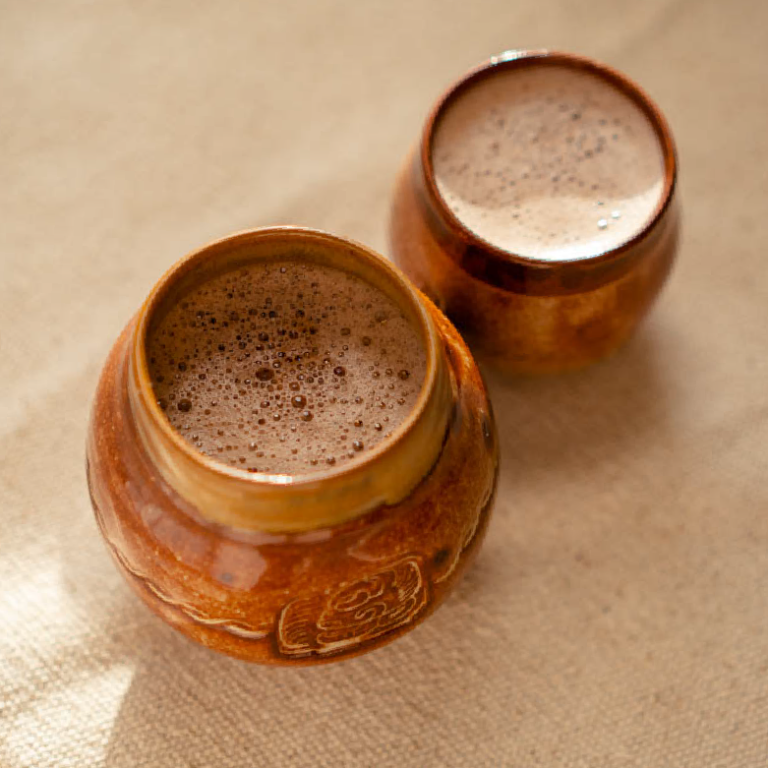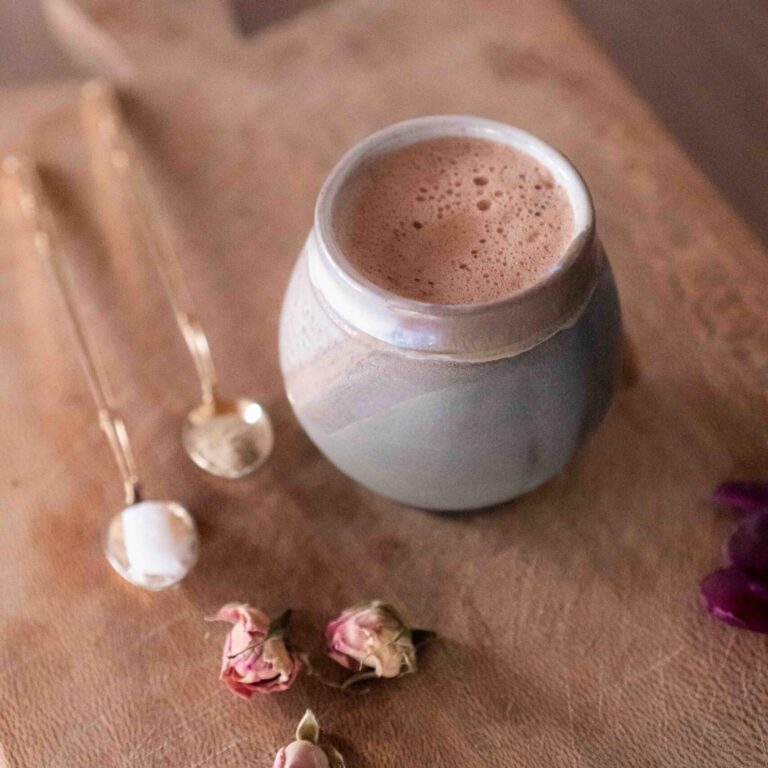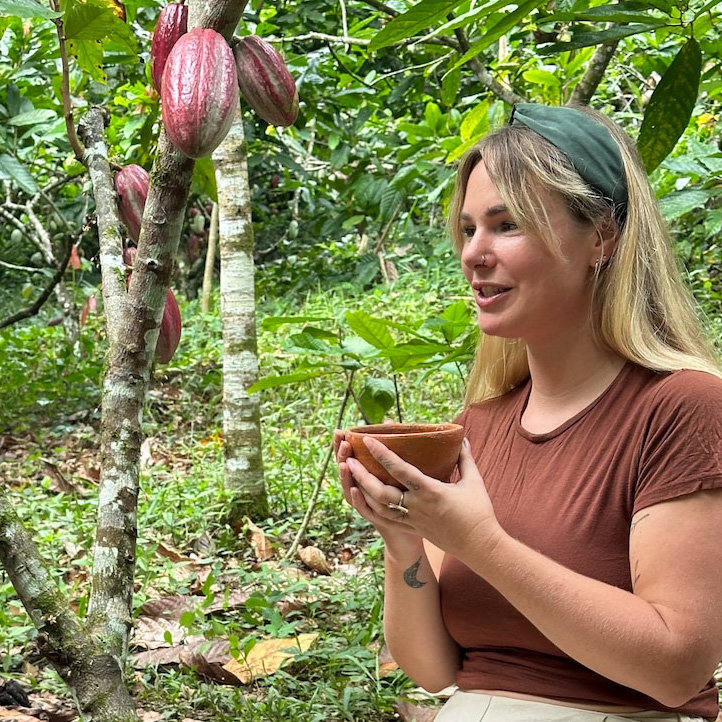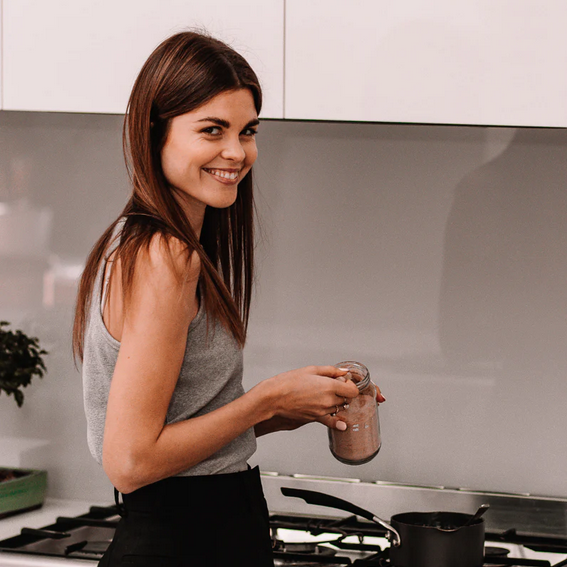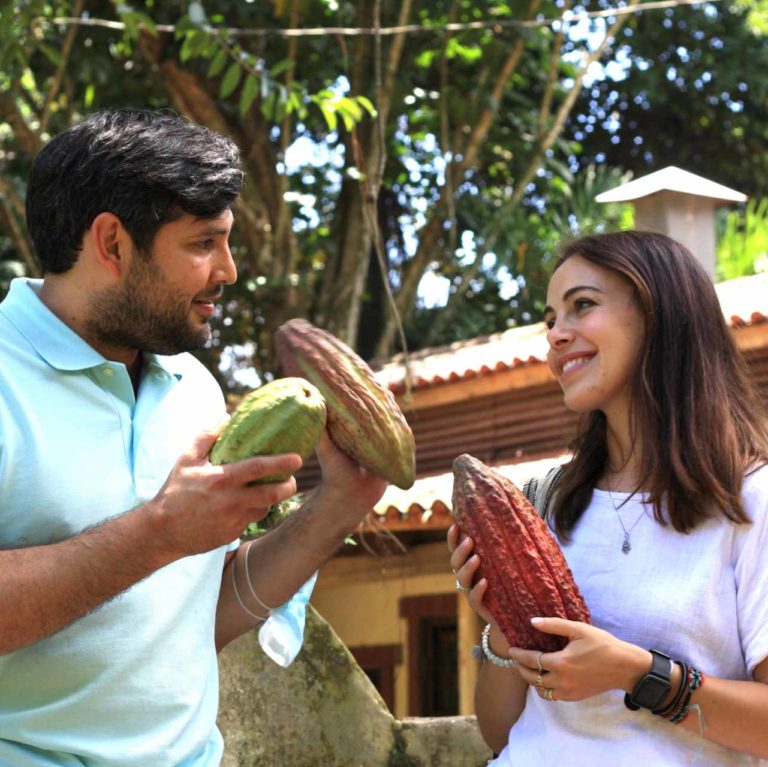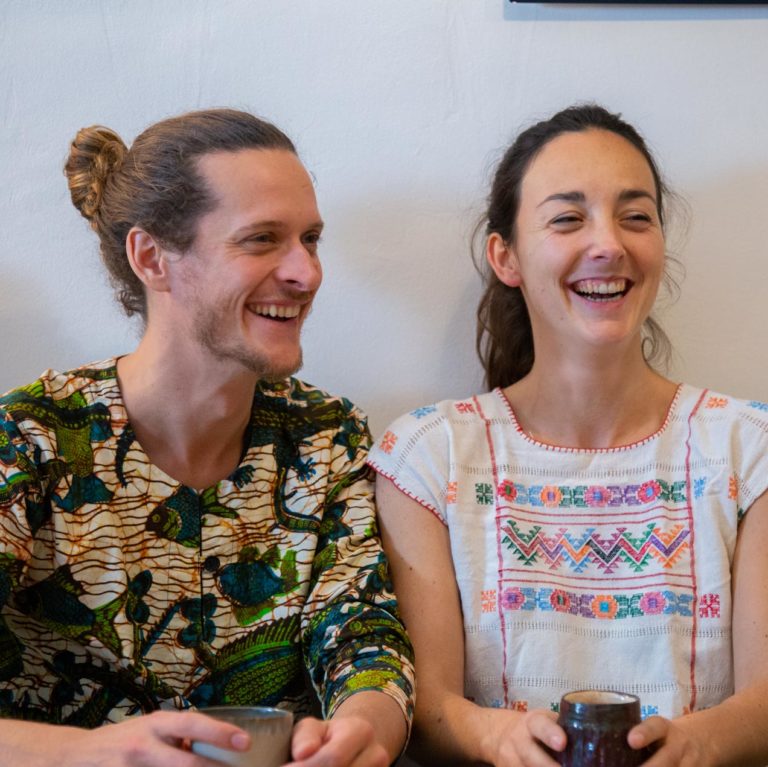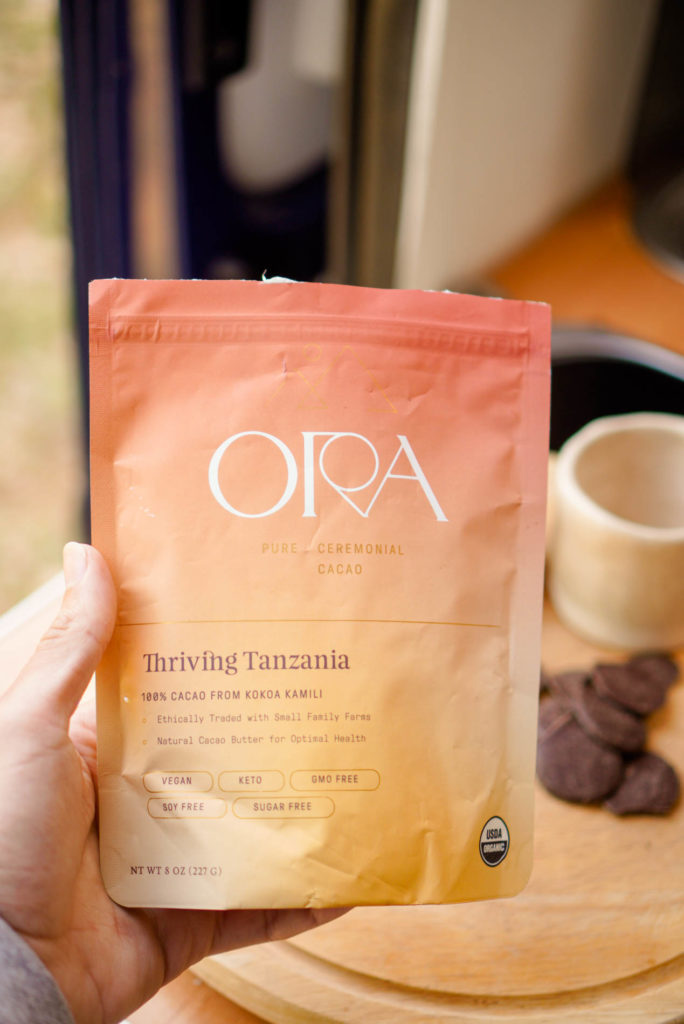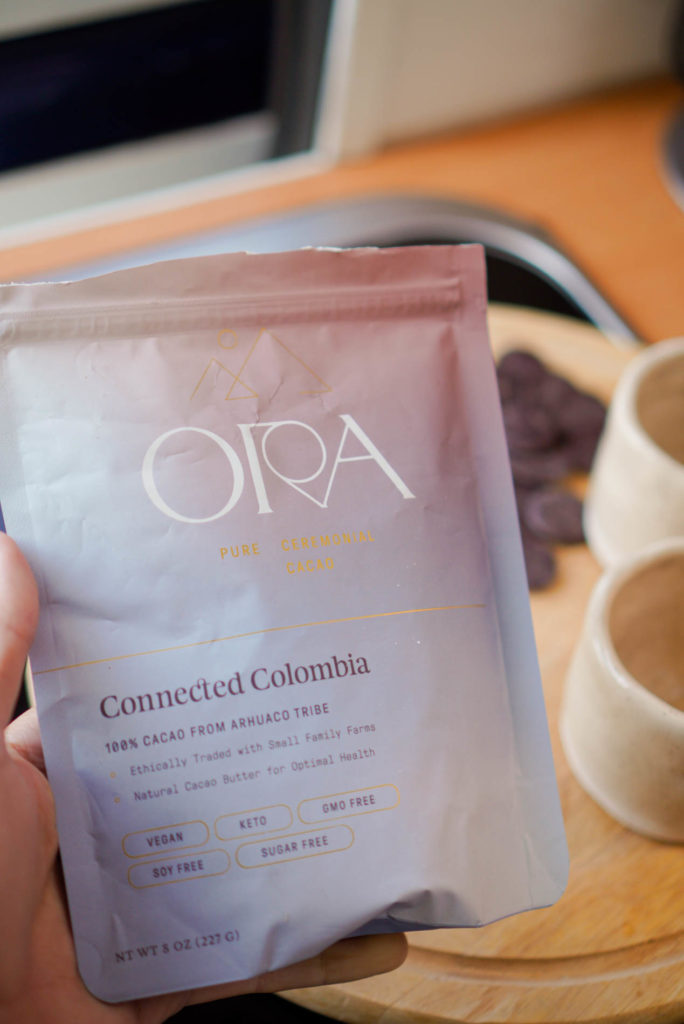— Jonas founded Ora Cacao in 2014 (which was then named Firefly Chocolate) after a special encounter in Oaxaca, Mexico.
He first took on the hat of a chocolate-maker, engaged in the bean-to-bar philosophy, while promoting health which led him to hold quite an outlying role in this niche.
But a few years later, he decided to make the most out of both worlds, assigning his skills and knowledge in chocolate making to purely promote health. His devotion for ceremonial cacao grew until it became central.
Cacao Guide
Ora Cacao
" Something shifted when I really experienced cacao as a medicine. I began to notice the benefits of it even with an 85% chocolate bar. [...] I knew it was different from my regular state of reality, something was altered. I had no idea cacao could do this, and so I started becoming really fascinated."
N.B. : This article contains an affiliate link applying a 10% discount. These advantages are here to compensate the time and work we put in our project. Yet, we’re dedicated to staying objective in our analyses.
Enjoy them if you want to try new cacaos while supporting us
04th of June, 2022
The journey
What was your first encounter with traditional cacao?
Jonas / That was in 2012 in Oaxaca, Mexico. I’ve learned the traditional chocolate making from María, she now passed away. I was traveling with a partner at the time, and she asked us if we wanted to learn how to make chocolate. She didn’t wait for the answer and was already taking the beans! We spent many hours with her learning how to roast the beans in the fire, she was actually doing it because it takes a huge amount of skills, we were hand peeling the cacao beans one by one, telling stories and then grinding it into a paste, it was really eye-opening. It was gritty, unrefined, but it was so fresh and infused with all that experience of making it. It was really unlike any cacao I ever had. And at the time I didn’t know the word « ceremonial cacao », but that was the first time I thought about how chocolate was really made.
How did your use of cacao evolved through the years - and how are you using it today?
Jonas / I drink it most days, not everyday… Like, 99,95% ! (laughs) I’ve largely stopped drinking it as a stimulant. It certainly gives energy, but theobromine is one of 300 molecules in cacao so it has many other effects, including putting you to sleep actually! For me it’s like having a living relationship with the plant medicine, and coming to it with a desired outcome isn’t the greatest thing. I try to be open to the full range of outcomes.
In the morning I drink matcha or even coffee if I’m really tired. Cacao comes later in the morning, sometimes even quite late, at the end of the day, after the tasks that keep me busy are done. I love it with, physical activity, dancing, before running or cycling. I tend to take small doses these days, I’m quite sensitive. I take the highest dose for work, when developing a new batch for example and I have to taste multiple times!
Each cacao feels like a different relationship, like different lovers, they’re quite unique. What came to my awareness recently is that working with a plant medicine, especially the one that works so much on the heart, means to keep awareness of all the energy centers in your body. They’re all equally important.
What brought you to build your own brand?
Jonas / This experience with María pulled me into the bean-to-bar chocolate world. I started Firefly Chocolate in 2014, I was already experimenting with chocolate, making 85% dark bars and replacing refined sugar by coconut sugar. For my health I wanted to avoid sugar but not stop chocolate.
Something shifted when I really experienced cacao as a medicine. I began to notice the benefits of it even with an 85% chocolate bar. So I took one that I made and brought it to the forest in early 2015 and at that point I was melting down the chocolate bar to make a drink and I remember thinking « Oh I feel like I’ve been taking psychadelic mushrooms! », everything was so beautiful, I knew it was different from my regular state of reality, something was altered. I had no idea cacao could do this, and so I started becoming really fascinated. I didn’t ran into the word « cacao ceremony » for at least an other year after that, and then I understood some other people were also interested in this experience of using cacao. It was really at the beginning of the movement and it was quite difficult to have ceremonial cacao, so I tried creating a website and make 100% cacao, nobody believed in it! I wasn’t sure people would understand that cacao could be a medicine but almost immediately my ceremonial cacao website did better than my chocolate website. So I started focusing on ceremonial cacao in 2018.

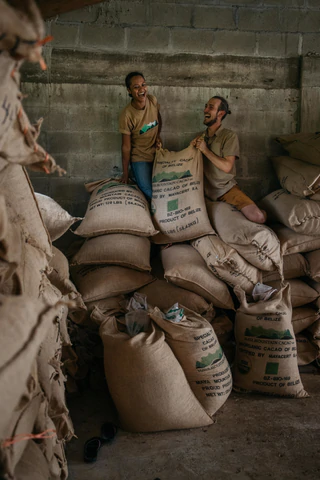
Diving into ceremonial cacao
How to bridge bean-to-bar chocolate with ceremonial cacao?
Mathieu / We are bean-to-bar enthusiasts ourselves and, through our network, we experienced that there’s still a gap between the fine chocolate community and the ceremonial cacao one, the latter being kind of left aside. Did you experience this separation and if yes how?
Jonas / I completely agree.
From a fine-chocolate perspective, often the quality of the cacao paste that is labelled as ceremonial cacao — aside from the energetic integrity and the beautiful sourcing of the beans — the quality of the chocolate making process is really poor. I found there’s very low awareness of roasting, same thing with grinding and due to this, flavor development is usually quite bad. And then a lot of them don’t temper the chocolate, which is about the presentation.
The movement matured a little bit, I’m seeing more makers using moulds for example but fundamentally, most of the ceremonial cacao makers don’t have a background in bean-to-bar and that’s where I’ve learned all these things about texture and flavor development.
You don’t essentially need those skills when sticking to ceremonial cacao, even more if your goal is to be as close as possible to a certain traditional making, but having them might bring something else on the table.
For instance, it’s true that tempering is not part of an indigenous traditional process. But tempering is so low temperature that there’s no way that it takes away the quality of the finished product. I think it actually enhances it because it aligns the crystals in structure in a way that holds the energy better, and also that it makes the presentation beautiful which, to me, is part of the ceremony.
On the other side, I think that the bean-to-bar chocolate movement is totally missing what’s happening with ceremonial cacao, and actually what’s happening with health too. As a maker of 85% dark chocolate with coconut sugar, I was an outlier. I was one of the very few people in the bean-to-bar chocolate who were making healthy chocolate on top of being well-sourced and crafted. I really went through a surprising amount of resistance.
And then there was the Raw chocolate movement when I got started, it’s getting more and more pushed back now, properly so, because I don’t think there’s such a thing as « raw » chocolate. But that was the people who were interested in chocolate as health. Unfortunately the sourcing of raw chocolate was usually quite poor.
So I see myself as emerging from all three of those movements and putting together wisdom and knowledge from all.
Are there steps of the making process that you had to change or improve, going from chocolate to cacao?
Jonas / Fundamentally the process uses the same tools but I would say my understanding has just become a little bit more specialized. I’m not working with sugar anymore, because there’s nothing to add and nothing to remove so it’s purely the quality of what’s going in and the quality of the process.
At the beginning as a chocolate maker, adding sugar made the taste all right, but now, making ceremonial cacao, I need to have such a deep understanding of everything for it to be good.
Was there a need to make the process more gentle (in terms of temperatures, speeds, etc) ?
Jonas / I was doing that from the beginning, I wasn’t doing industrial chocolate, I was already making chocolate as medicine from the very beginning. I think that’s also why I struggled as a chocolate maker because I was already leaning on the low temperatures and high intensity in chocolate bars, rather than doing the really smooth stuff.
How is it to work with traders while maintaining a true bond at the source of cacao?
Mathieu / We saw that you work with Uncommon cacaos as sourcer and exporter, yet we could feel that you like to have a true bond with every link of your supply chain, especially farmers. How is it to work with a big trader while maintaining a true connection with the source of your cacaos?
Jonas / I work with multiple cacao traders, it’s truly helpful to work with them for the import, logistics and everything else they handle. I think everything is about creating your own experience. I like to go on site and get properly involved. When I started working with Uncommon cacao, I just took a trip and showed up to their office. I was there for 10 days and I just asked them what could I do! They took me to different steps of the process where they intervene. One thing that I’ve been pushing is getting to know the farms and the farmers. I began to stay overnight in villages and living with the families to get to know them better. I really like travelling on my own, asking the questions, making the observations. There’s such a deep listening process with cacao and communities.
I’m pretty familiar with traveling and going to different communities and really understanding their perspectives, their life, and how to design for them rather to design for what I need.
How do you define 'ceremonial grade'?
Jonas / To me, ceremonial cacao is a variable concept. Very few things have to be present to make a cacao that’s ceremonial. It’s more like a regenerative forest ecosystem, there’s like 50 or 100 best practices, by the time you start doing dozens of those, you have a regenerative ecosystem. It’s not because you didn’t plant a certain plant that it’s not.
With all the different elements at stake, there’s a lot of ways to go to achieve ceremonial cacao. For example, I would say that it doesn’t have to be certified organic but it actually adds to the process because of all the integrity of the supply chain that it creates. Or that it doesn’t need to be refined down to 20 microns, using the bean-to-bar awareness on the particle development and texture development. But it adds to the quality in the process.
It would be interesting to talk with all the different ceremonial cacao makers and to put our ideas and processes together and develop a standard of ceremonial grade cacao. There are some non-negociable in there that’s for sure but it’d be a difficult thing to get some consensus around.
Internally I have a running list of things that contribute to the energy of cacao, a lot of them are down at the source and the relationships with farmers and the cacao plant itself, outside of the manufacturing process. But ceremonial cacao is kind of hard to describe because it’s not a single thing, it’s a body of knowledge. So yes, I’m making 100% « chocolate » but it’s so much more than that, there are definitely some divides to bridge.
There are also conversations to have about the social impact that’s possible to have in cacao farming communities. It was really confronting for me, as a chocolate-maker, to go to Belize for the first time and understand that everything I’m doing there is depending on relationships with communities that have been through hundreds of years of genocide and exploitation. There’s no way that good price for cacao can bring justice. It’s so much more than the price of cacao. There’s a far deeper level of social engagement that has to be done.
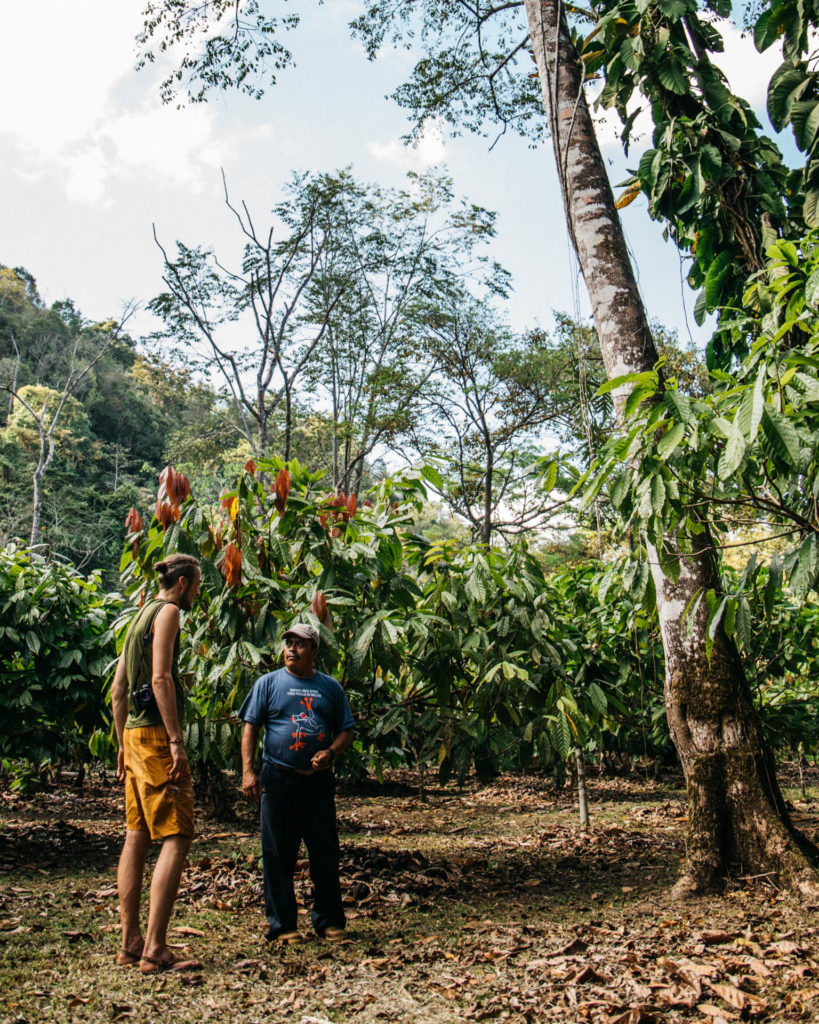
Insights
When adding a specific cacao to your range, how do you choose one over another?
Jonas / Usually they show up one at a time, it’s a really intuitive and energetic connection. Sometimes it’s really obvious, to the point that I can’t ignore it! With the Tanzanian cacao, nobody at that point was making ceremonial cacao from Africa. And I was a bit against working with it because I’ve heard all the bad stories.
I have a friend, who was helping to create a project there and he was telling me to use this cacao, and I said no. But he sent it to me, at my doorstep! And I put it in a closet, didn’t do anything with it for months. And one day one of my employee did a little test batch with the beans and it was really good! So I took a trip to Tanzania to see what it was all about and I’ve learned so much about ceremonial cacao there, I never expected that. It’s so complex to work in Tanzania, on an other continent, in a different culture, and the supply chain of getting cacao through such a big distance. They don’t have the long standing history and culture of working with cacao, but they know so much when it comes to the post-harvest processing and the transport that it adds so much to cacao and it makes a great ceremonial cacao!
So, I think having the long cultural history is a plus but there are also other things. And Tanzania led me to that understanding, because I came with a certain preconception, but in the end that’s medicine.
How do you like experimenting ceremonial cacao?
Jonas / I think the best way of experimenting cacao is to get out in nature and just sit with a cacao. For me that’s one of the best ways for understanding cacao — asking cacao « hey, I want to learn about you », and have a deeper relationship with it. When working on my process with cacao, or my business, usually I ask the cacao itself, for me to slow down enough, to pause, and to observe in which direction it takes me.
Your best memory linked to cacao?
Jonas / There’s so many different stories! But I think when I’m at the cacao farms that’s such a special time there. Going to Guatemala was really special, in Chivite where we source our cacao. I was there for the first time for my birthday actually, and in the village, they told us that we could come but without any audio or video devices because they had had bad experiences In the past.
So we respected that, we went to the village, they prepared a big lunch for us, and I was amazed because we had all these questions for them but they also had all these questions for us! They were so interested in the western lifestyle, understanding our reality.
We had all these conversations there and at the cacao farms, we talked 50/50 about cacao and broader life wisdom and it was beautiful conversations.
At some point I asked them about their spiritual connection with cacao, and they almost didn’t understand it at the first time, that I was actually interested in their spiritual relationship! They were really surprised, because no westerner has ever asked them about it. It was fascinating, they were asking the elders about the traditions. It was one of my first experience about hearing a community talking about their practice about cacao and I was discovering that it was a living tradition out there.That was something I knew I was searching but I didn’t actually knew where to find it. It just felt like the right place.
One of the thing that a cacao farmer said to me there was that « cacao is gold », not just for the economic impact, but also for the depth of their spiritual relationship. That influenced the rebranding as « Ora Cacao ».
Your favorite recipe/favorite way to prepare a cup of cacao?
Jonas / I am a purist! I just do hot water and cacao in a blender. I like it when it’s thick. Or I just let a disc melt in my mouth. I like it very traditional and simple in that way.
What’s the last thing that moved you lately?
Jonas / This is an experience. In March for my birthday I was in Costa Rica and I attended the International School of Temple Arts, and it was very powerful. I can say it changed my life on a personal level, it’s a very powerful ritual container that connects people to their shamanic state of consciousness. It was really beautiful and very empowering, I think I’ve found a piece of myself, I felt at home, I’ve learned many rituals that are really helpful for my functioning as a human and in my relationships. It was a game changer for me.
Do you have upcoming projects with Ora Cacao?
Jonas / Two origins are coming, they’re already here in the chocolate factory!

We hope you enjoyed this content! If you’d like to try Ora Cacao, enjoy our 10% discount by clicking this link.
INSIGHTS
RECIPES
PORTRAITS
©2024 Cacao Insights ☼ Made from the ♡




